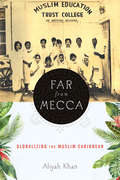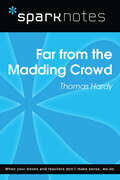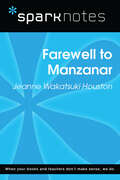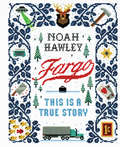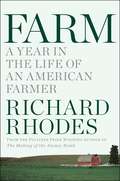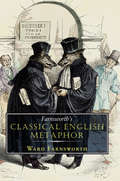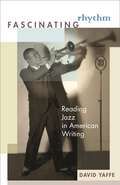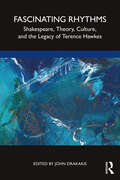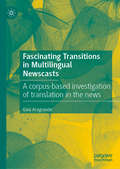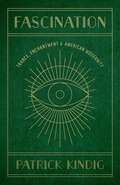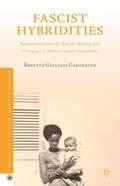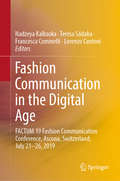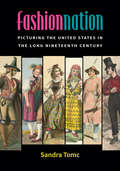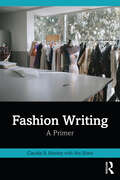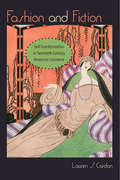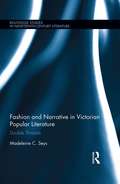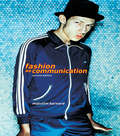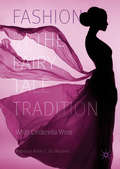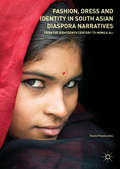- Table View
- List View
Far Country: Scenes from American Culture
by Franco MorettiThe influential and controversial critic takes literary history out of the classroom and into the publicIn the field of literary history and theory, Franco Moretti is synonymous with innovation. The cofounder of the Stanford Literary Lab, he brought quantitative methods into the study of the novel, enabling a “distant” reading that uses computation to analyze literary production over centuries. But at the same time, he was also teaching undergraduates the history of literature. Knowing Moretti, it’s no surprise that he didn’t teach the course the accepted way: one author after another, in a long uninterrupted chain. Instead, he put an irregular chessboard in front of his students that was too strange to be taken for granted. Literary history had become a problem, and he offered a solution.In Far Country, Moretti take these lectures out of the classroom and lets us share in the passion and excitement that comes from radical critique. Unconstrained by genre, Moretti juxtaposes Whitman and Baudelaire, the Western and film noir, even Rembrandt and Warhol, illuminating each through their opposition. With his guidance, we revel in the process of transformation—the earthquakes that shook the “how” of artistic form—and begin to shape a new view on American culture.Bracing in its insight and provocative in its conclusions, Far Country is a critical look at the development of American cultural hegemony.
Far From Heaven, Safe, and Superstar: Three Screenplays
by Todd HaynesThree acclaimed screenplays from one of today’s most provocative filmmakers, including the Oscar nominated screenplay Far from Heaven. An award-winning auteur and a pioneer of the New Queer Cinema movement, Todd Haynes has achieved both critical acclaim and box office success with his original, intelligent, and often controversial films. Collected here are three of his most celebrated screenplays. Far from Heaven: Winning fifty critics’ prizes and appearing on two hundred Top Ten lists, Far from Heaven was also nominated for four Academy Awards. Inspired by the films of Douglas Sirk, it tells the story of a 1950s housewife who is alienated by her neighbors when she pursues an affair with her African American gardener after learning of her husband’s homosexuality. Safe: Haynes’s breakthrough feature was voted Best Film of the 1990s by the Village Voice Film Critics Poll. It tells the disturbing story of an affluent suburban housewife whose life is shattered by a mysterious illness. One character suggests that perhaps she is “allergic to the twentieth century.” Superstar: The Karen Carpenter Story: Told with a cast of Barbie dolls, this short film about Karen Carpenter’s battle with anorexia was named one of Entertainment Weekly’s Top 50 Cult Movies in 2003. Though the film was ordered destroyed after a lawsuit by the Carpenter estate, it remains an underground classic and “the most talked-about, least-seen film of the ’80s” (The A.V. Club).
Far from Mecca: Globalizing the Muslim Caribbean (Critical Caribbean Studies)
by Aliyah KhanFar from Mecca: Globalizing the Muslim Caribbean is the first academic work on Muslims in the English-speaking Caribbean. Khan focuses on the fiction, poetry, and music of Islam in Guyana, Trinidad, and Jamaica. Combining archival research, ethnography, and literary analysis, Khan argues for a historical continuity of Afro- and Indo-Muslim presence and cultural production in the Caribbean. Case studies explored range from Arabic-language autobiographical and religious texts written by enslaved Sufi West Africans in nineteenth-century Jamaica, to early twentieth-century fictions of post-indenture South Asian Muslim indigeneity and El Dorado, to the attempted government coup in 1990 by the Jamaat al-Muslimeen in Trinidad, as well as the island’s calypso music, to contemporary judicial cases concerning Caribbean Muslims and global terrorism. Khan argues that the Caribbean Muslim subject, the “fullaman,” a performative identity that relies on gendering and racializing Islam, troubles discourses of creolization that are fundamental to postcolonial nationalisms in the Caribbean.
Far from the Madding Crowd (SparkNotes Literature Guide Series)
by SparkNotesFar from the Madding Crowd (SparkNotes Literature Guide) by Thomas Hardy Making the reading experience fun! Created by Harvard students for students everywhere, SparkNotes is a new breed of study guide: smarter, better, faster.Geared to what today's students need to know, SparkNotes provides:chapter-by-chapter analysis explanations of key themes, motifs, and symbols a review quiz and essay topics Lively and accessible, these guides are perfect for late-night studying and writing papers.
Farewell to Manzanar (SparkNotes Literature Guide Series)
by SparkNotesFarewell to Manzanar (SparkNotes Literature Guide) by Jeanne Wakatsuki Houston Making the reading experience fun! Created by Harvard students for students everywhere, SparkNotes is a new breed of study guide: smarter, better, faster.Geared to what today's students need to know, SparkNotes provides:chapter-by-chapter analysis explanations of key themes, motifs, and symbols a review quiz and essay topics Lively and accessible, these guides are perfect for late-night studying and writing papers.
Fargo: This Is a True Story
by Noah HawleyThe making of the acclaimed, award-winning TV show told exactly as it occurred.From bestselling, Edgar Award-winning author Noah Hawley (Before the Fall) comes the perfect collector's item to the hit TV show based on the film Fargo. This companion to the first three seasons of Fargo, which Hawley created and executive produced, is packed with script selections-including all three pilots-candid, behind-the-scenes photography, exclusive interviews with cast and crew, and much, much more.Learn about what makes Lorne Malvo tick in a fascinating conversation with Billy Bob Thornton. Discover Kirsten Dunst's and Jesse Plemons's favorite scenes. Find out what it was like for Ewan McGregor to play both Stussy brothers. Hear from Patrick Wilson, Carrie Coon, Mary Elizabeth Winstead, and many others as Hawley, in this gorgeous, illuminating journey, takes you behind the curtain to reveal the making of one of the best shows on television.
Farm
by Richard RhodesPulitzer Prize winning author, Richard Rhodes's year-long journey into the heart of American agriculture reveals a life trapped between two eras: the modern and the traditional, the future and the past.Richly textured and deeply moving, Farm chronicles a year in the life of Tom and Sally Bauer of Crevecoeur County, Missouri, who cultivate nearly two square miles of the surface of the earth. They struggle to build up their farm, harvesting corn, birthing calves, planting wheat, coping with the vagaries of nature and government regulations. Required of them are ancient skills (an attunement to the weather, animals, crops, and land) as well as a mastery of modern technology, from high-tech machinery to genetics and sophisticated chemicals. Written with honesty and insight, Farm is a revelatory exploration of farm life in the 20th century and the joys and challenges of the modern rural landscape.
Farnsworth's Classical English Metaphor
by Ward FarnsworthFarnsworth's Classical English Rhetoric was the definitive guide to the use of rhetorical devices in English. It became a best-seller in its field, with over 20,000 copies in print. Here now is the natural sequel, Farnsworth's Classical English Metaphor--the most entertaining and instructive book ever written about the art of comparison. A metaphor compares two things that seem unalike. Lincoln was a master of the art (A house divided against itself cannot stand). So were Jefferson (The tree of liberty must be refreshed from time to time with the blood of patriots and tyrants) and Shakespeare (All the world's a stage/And all the men and women merely players). Farnsworth's book is the finest collection of such figurative comparisons ever assembled. It offers an original analysis of patterns in the sources and uses of metaphor. It also explains the different stylistic ways that comparisons can be written, and with what effects. The book starts by dividing the sources of metaphor into families, including nature, architecture, animals, and myth. It then shows how the best writers have put each of those traditions to distinctive use-for the sake of caricature, to make an abstract idea visible, to make a complicated idea simple. The book provides, along the way, an extraordinarily wide-ranging tour of examples from novelists, playwrights, philosophers, and orators. There is interest, instruction, and amusement to be found on every page. Ward Farnsworth-lawyer, dean, teacher, and polymath-has produced another indispensable book for the writer. Classical English Metaphor will be a constant source of learning and enjoyment for anyone who appreciates the art of observation and the pleasure of well-chosen words.
Fascinating Rhythm: Reading Jazz in American Writing
by David YaffeHow have American writers written about jazz, and how has jazz influenced American literature? In Fascinating Rhythm, David Yaffe explores the relationship and interplay between jazz and literature, looking at jazz musicians and the themes literature has garnered from them by appropriating the style, tones, and innovations of jazz, and demonstrating that the poetics of jazz has both been assimilated into, and deeply affected, the development of twentieth-century American literature. Yaffe explores how Jewish novelists such as Norman Mailer, J. D. Salinger, and Philip Roth engaged issues of racial, ethnic, and American authenticity by way of jazz; how Ralph Ellison's descriptions of Louis Armstrong led to a "neoconservative" movement in contemporary jazz; how poets such as Wallace Stevens, Hart Crane, Langston Hughes, and Frank O'Hara were variously inspired by the music; and how memoirs by Billie Holiday, Charles Mingus, and Miles Davis both reinforced and redeemed the red light origins of jazz. The book confronts the current jazz discourse and shows how poets and novelists can be placed in it--often with problematic results. Fascinating Rhythm stops to listen for the music, demonstrating how jazz continues to speak for the American writer.
Fascinating Rhythms: Shakespeare, Theory, Culture, and the Legacy of Terence Hawkes
by John DrakakisAs one of the most adventurous literary and cultural critics of his generation, Terence Hawkes’ contributions to the study of Shakespeare and the development of literary and cultural theory have been immense. His work has been instrumental in effecting a radical shift in the study of Shakespeare and of literary studies. This collection of essays by some of his closest colleagues, friends, peers, and mentees begins with an introduction by John Drakakis, outlining the profound impact that Hawkes’ work had on various areas of literary studies. It also includes a poem by Christopher Norris, who worked with Hawkes for many years at the University of Cardiff, as well as work on translation, social class, the historicist and presentist exploration of Shakespearean texts, and teaching Shakespeare in prisons. The volume features essays by former students who have gone on to establish reputations in areas beyond the study of literature, and who have contributed ground-breaking volumes to the pioneering New Accents series. It concludes with Malcolm Evans’ innovative account of the migration of semiotics into the area of business. This book is a vibrant and informative read for anyone interested in Hawkes’ unique blend of literary and cultural theory, criticism, Shakespeare studies, and presentism.
Fascinating Transitions in Multilingual Newscasts: A corpus-based investigation of translation in the news
by Gaia AragrandeThis book combines methods including Critical Discourse Analysis (CDA), Corpus Linguistics and comparative analysis in order to grasp the complexities and ramifications of multilingual broadcasting journalism in different national and supranational contexts. Starting with the idea that both journalism and translation are multi-layered objects and may conceal power dynamics and struggles within society, the author uses a theoretical and methodological convergence framework to analyse examples from Italy, the UK and Europe, as well as calling for larger and more systematic studies about language transfer activities in the news. This book will be of interest to students and scholars of translation, corpus linguistics, journalism and CDA.
Fascination: Trance, Enchantment, and American Modernity
by Patrick KindigMost cultural critics theorize modernity as a state of disenchanted distraction, one linked to both the rationalizing impulses of scientific and technological innovation and the kind of dispersed, fragmented attention that characterizes the experience of mass culture. Patrick Kindig’s Fascination, however, tells a different story, showing that many fin-de-siècle Americans were in fact concerned about (and intrigued by) the modern world’s ability to attract and fix attention in quasi-supernatural ways. Rather than being distracting, modern life in their view had an almost magical capacity to capture attention and overwhelm rational thought.Fascination argues that, in response to the dramatic scientific and cultural changes of the late nineteenth and early twentieth centuries, many American thinkers and writers came to conceive of the modern world as fundamentally fascinating. Describing such diverse phenomena as the electric generator, the movements of actresses, and ethnographic cinema as supernaturally alluring, they used the language of fascination to process and critique both popular ideologies of historical progress and the racializing logic upon which these ideologies were built. Drawing on an archive of primary texts from the fields of medicine, (para)psychology, philosophy, cultural criticism, and anthropology—as well as creative texts by Harriet Prescott Spofford, Charles Chesnutt, Theodore Dreiser, Paul Laurence Dunbar, Edward S. Curtis, Robert J. Flaherty, and Djuna Barnes—Kindig reconsiders what it meant for Americans to be (and to be called) modern at the turn of the twentieth century.
Fascination: Viewer Friendly TV Journalism
by Nancy Graham HolmDeveloped from the established traditions of print and radio journalism, television journalism has often failed to reach its potential to develop away from these other media. However, because of the synthesis of words, pictures, and sound, television journalism has the ability to shift from simply reporting the news to weaving stories. In Fascination, veteran television journalist Nancy Graham Holm incorporates years in the field and extensive teaching experience to produce an instructive and entertaining guide to all aspects of television journalism. With a dual focus on aesthetics and technique, this book instructs the reader on the best way to use visuals and sound, different reporting techniques, and appropriate behaviour for journalists. Each chapter benefits from real-world examples and helpful tips to guide the reader through each stage of television journalism. This book is an excellent guide for those wanting to start a career in television journalism as well as seasoned professionals wishing to gain a new perspective.
Fascist Hybridities
by Rosetta Giuliani CaponettoWhile less explicitly racist than its Germany Nazi counterpart, Italian Fascism attached considerable importance to racial purity. Fascist Hybridities examines how Italian literature and cinema of the 1930s are traversed by hybrid figures, and how these works ultimately reveal biracial offspring and Levantines as interchangeable characters who, in the historical scenario under which Mussolini’s Fascist regime operated, present unique and specific threats to notions of Italian racial and cultural purity. As Rosetta Giuliani-Caponetto shows, that more often than not, the visual and textual presence of mulatto and Levantine characters stoked deep racial and cultural anxieties, forcing their audiences to uncomfortably examine, rather than confirm, their own collective identity.
Fascist Mythologies: The History and Politics of Unreason in Borges, Freud, and Schmitt (New Directions in Critical Theory #79)
by Federico FinchelsteinFor fascism, myth was reality—or was realer than the real. Fascist notions of the leader, the nation, power, and violence were steeped in mythic imagery and the fantasy of transcending history. A mythologized primordial past would inspire the heroic overthrow of a debased present to achieve a violently redeemed future. What is distinctive about fascist mythology, and how does this aspect of fascism help explain its perils in the past and present?Federico Finchelstein draws on a striking combination of thinkers—Jorge Luis Borges, Sigmund Freud, and Carl Schmitt—to consider fascism as a form of political mythmaking. He shows that Borges’s literary and critical work and Freud’s psychoanalytic writing both emphasize the mythical and unconscious dimensions of fascist politics. Finchelstein considers their ideas of the self, violence, and the sacred as well as the relationship between the victims of fascist violence and the ideological myths of its perpetrators. He draws on Freud and Borges to analyze the work of a variety of Latin American and European fascist intellectuals, with particular attention to Schmitt’s political theology. Contrasting their approaches to the logic of unreason, Finchelstein probes the limits of the dichotomy between myth and reason and shows the centrality of this opposition to understanding the ideology of fascism.At a moment when forces redolent of fascism cast a shadow over world affairs, this book provides a timely historical and critical analysis of the dangers of myth in modern politics.
Fashion Communication in the Digital Age: FACTUM 19 Fashion Communication Conference, Ascona, Switzerland, July 21-26, 2019
by Lorenzo Cantoni Nadzeya Kalbaska Teresa Sádaba Francesca CominelliThis book represents a major milestone in the endeavour to understand how communication is impacting on the fashion industry and on societal fashion-related practices and values in the digital age. It presents the proceedings of FACTUM 19, the first in a series of fashion communication conferences that highlights important theoretical and empirical work in the field. Beyond documenting the latest scientific insights, the book is intended to foster the sharing of methodological approaches, expand the dialogue between communications’ studies and fashion-related disciplines, help establish an international and interdisciplinary network of scholars, and offer encouragement and fresh ideas to junior researchers. It is of high value to academics and students in the fields of fashion communication, fashion marketing, visual studies in fashion, digital transformation of the fashion industry, and the cultural heritage dimension of fashion. In addition, it is a key resource for professionals seeking sound research on fashion communication and marketing.
Fashion Nation: Picturing the United States in the Long Nineteenth Century
by Sandra TomcFashion Nation argues that popular images of the United States as a place of glitter and lights, of gaudy costumes and dizzying visual surfaces—usually understood as features of technomodernity—were in fact brewed in the rich, strange world of early nineteenth-century British and European folk nationalism when nations were compelled to offer visual manifestations of their allegedly true ancestral form. Showing that folk and ethnic nationalism played a central role in writing and culture, the book draws on a rare and colorful visual archive of national costumes, cartoons, theatrical spectacles, and immersive entertainments to show how the United States sprung to life as a visual space for transatlantic audiences. Fashion Nation not only includes chapters on major U.S. travel writers like Nathaniel Parker Willis and James Fenimore Cooper, but it also presents explorations of the vogue for folk and ethnic costume, the role of Indigenous dress in Wild West spectacles, and the nationalistic décor on display at late nineteenth-century world’s fairs and amusement parks. Engagingly written and beautifully illustrated, Fashion Nation opens the door to a forgotten legacy of visual symbols that still inhabit ethnic and white nationalism in the United States today, showing how fantasies of glittery surfaces were designed to draw the eye away from a sordid history.
Fashion Writing: A Primer
by Claudia B. Manley Abi SloneActing as a comprehensive primer for the field of fashion writing, this book provides an accessible entry point for readers from diverse backgrounds, giving them a clear understanding of the intricacies of fashion writing, the outlets in which it appears, and the possibilities beyond the page. Fashion Writing: A Primer lays out a framework for various types of fashion writing (runway and trend reports, service pieces, features, and more), while offering students a solid foundation of fashion history, cultural touchstones, common fashion terminology, and contemporary issues affecting the fashion industry today. Featuring interviews with current fashion journalists, such as Robin Givhan, Sarah Mower, Charlie Porter, and Amanda Winnie Kabuiku, as well as annotated bibliographies centred on the themes of each chapter, this book delivers fashion writing essentials for anyone interested in the field. Readers will come away aware of the many influences on the fashion world, helping them establish credibility as a fashion writer. Covering both print and online outlets, this is a valuable text for students with an interest in fashion communication, journalism, and fashion media, as well as early career fashion professionals looking for a complete guide to the industry.
Fashion and Authorship: Literary Production and Cultural Style from the Eighteenth to the Twenty-First Century (Palgrave Studies In The Enlightenment, Romanticism And Cultures Of Print Ser.)
by Gerald EganStudies of fashion and literature in recent decades have focused primarily onrepresentations of clothing and dress within literary texts. But what about theauthor? How did he dress? What where her shopping practices and predilections?What were his alliances with modishness, stylishness, fashion? The essays in thisbook explore these and other questions as they look at authors from theeighteenth century through the postmodern and digital eras, cultural producerswho were also men and women of fashion: Alexander Pope, Hester Thrale, MaryRobinson, Lord Byron, William Thackeray, Charlotte Bronte, Wilkie Collins,Margaret Oliphant, Virginia Woolf, Rebecca West, Trudi Kanter, Angela Carter,and Martin Margiela. The essays collected here ultimately converge upon afundamental question: what happens to our notions of timeless literature whenauthorship itself is implicated in the transient and the temporary, the cycles andmaterials of fashion?“Gerald Egan’s provocative introduction to this exciting new book poses a boldquestion: How are authorship and literature – so often linked to ideas oftranscendence – implicated in the transient trends and stuff of fashion? Thethirteen chapters that follow track authorship’s complex implication in thediscourses and materiality of fashion and fashionable goods from the eighteenthto the twentieth centuries. Wide-ranging in discipline and chronology, yetforensically focused and carefully argued, this book makes a striking andwonderfully original contribution to studies of authorship, celebrity and materialculture.”— Dr Jennie Batchelor, Professor of Eighteenth-Century Studies,University of Kent, UK
Fashion and Fiction: Self-Transformation in Twentieth-Century American Literature (Cultural Frames, Framing Culture)
by Lauren S. CardonDuring the twentieth century, the rise of the concept of Americanization--shedding ethnic origins and signs of "otherness" to embrace a constructed American identity--was accompanied by a rhetoric of personal transformation that would ultimately characterize the American Dream. The theme of self-transformation has remained a central cultural narrative in American literary, political, and sociological texts ranging from Jamestown narratives to immigrant memoirs, from slave narratives to Gone with the Wind, and from the rags-to-riches stories of Horatio Alger to the writings of Barack Obama. Such rhetoric feeds American myths of progress, upward mobility, and personal reinvention. In Fashion and Fiction, Lauren S. Cardon draws a correlation between the American fashion industry and early twentieth-century literature. As American fashion diverged from a class-conscious industry governed by Parisian designers to become more commercial and democratic, she argues, fashion designers and journalists began appropriating the same themes of self-transformation to market new fashion trends. Cardon illustrates how canonical twentieth-century American writers, including Edith Wharton, Theodore Dreiser, F. Scott Fitzgerald, Ernest Hemingway, and Nella Larsen, symbolically used clothing to develop their characters and their narrative of upward mobility. As the industry evolved, Cardon shows, the characters in these texts increasingly enjoyed opportunities for individual expression and identity construction, allowing for temporary performances that offered not escapism but a testing of alternate identities in a quest for self-discovery.
Fashion and Narrative in Victorian Popular Literature: Double Threads (Routledge Studies in Nineteenth Century Literature)
by Madeleine C. SeysWe know that way we dress says a lot about us. It’s drilled into us by our parents as children, as adults throughout our working lives, and eternally from the culture surrounding us. Our dress tells the outside world of the culture and era we come from to our social status within that culture. Our dress can be telling of our political views, religious beliefs, sexuality and countless other identifying traits that we can keep hidden or show to the world by our choice of what to wear when heading venturing out. This was absolutely true, famously so, in the Victorian Era in which men and women alike wore their status on their often lavish, embellished sleeves. In her new book, Dr. Madeleine Seyes explores Victorian culture through the lens of fashion in her new book, Double Threads: Fashion and Victorian Popular Literature, which sits at the intersection of the fields of Victorian literary studies, dress and material cultural studies, feminist literary criticism, and gender and sexuality studies.
Fashion as Communication
by Malcolm BarnardWhat kinds of things do fashion and clothing say about us? What does it mean to wear Gap or Gaultier, Milletts or Moschino? Are there any real differences between Hip-Hop style and Punk anti-styles? In this fully revised and updated edition, Malcolm Barnard introduces fashion and clothing as ways of communicating and challenging class, gender, sexual and social identities.Drawing on a range of theoretical approaches from Barthes and Baudrillard to Marxist, psychoanalytic and feminist theory, Barnard addresses the ambivalent status of fashion in contemporary culture.
Fashion in the Fairy Tale Tradition: What Cinderella Wore
by Rebecca-Anne C. Do RozarioThis book is a journey through the fairy-tale wardrobe, explaining how the mercurial nature of fashion has shaped and transformed the Western fairy-tale tradition. Many of fairy tale’s most iconic images are items of dress: the glass slippers, the red capes, the gowns shining like the sun, and the red shoes. The material cultures from which these items have been conjured reveal the histories of patronage, political intrigue, class privilege, and sexual politics behind the most famous fairy tales. The book not only reveals the sartorial truths behind Cinderella’s lost slippers, but reveals the networks of female power woven into fairy tale itself.
Fashion, Dress and Identity in South Asian Diaspora Narratives
by Noemí Pereira-AresThis book is the first book-length study to explore the sartorial politics of identity in the literature of the South Asian diaspora in Britain. Using fashion and dress as the main focus of analysis, and linking them with a myriad of identity concerns, the book takes the reader on a journey from the eighteenth century to the new millennium, from early travel account by South Asian writers to contemporary British-Asian fictions. Besides sartorial readings of other key authors and texts, the book provides an in-depth exploration of Kamala Markandaya’s The Nowhere Man (1972), Hanif Kureishi’s The Buddha of Suburbia (1990), Meera Syal’s Life Isn’t All Ha Ha Hee Hee (1999) and Monica Ali’s Brick Lane (2003).This work examines what an analysis of dress contributes to the interpretation of the featured texts, their contexts and identity politics, but it also considers what literature has added to past and present discussions on the South Asian dressed body in Britain. Endowed with an interdisciplinary emphasis, the book is of interest to students and academics in a variety of fields, including literary criticism, socio-cultural studies and fashion theory.
Fashionable Fictions and the Currency of the Nineteenth-Century British Novel (Cambridge Studies in Nineteenth-Century Literature and Culture)
by Lauren GillinghamRevealing how a modern notion of fashion helped to transform the novel and its representation of social change and individual and collective life in nineteenth-century Britain, Lauren Gillingham offers a revisionist history of the novel. With particular attention to the fiction of the 1820s through 1840s, this study focuses on novels that use fashion's idiom of currency and obsolescence to link narrative form to a heightened sense of the present and the visibility of public life. It contends that novelists steeped their fiction in date-stamped matters of dress, manners, and media sensations to articulate a sense of history as unfolding not in epochal change, but in transient issues and interests capturing the public's imagination. Reading fiction by Mary Shelley, Letitia Landon, Edward Bulwer-Lytton, W. H. Ainsworth, Charles Dickens, Mary Elizabeth Braddon, and others, Fashionable Fictions tells the story of a nineteenth-century genre commitment to contemporaneity that restyles the novel itself.


